| Maximum conservation time of celery juice |
|---|
| Room temperature | Up to one day |
| Refrigerator | Up to 72 hours |
| Freezer | Up to 6 months |
[Show table of contents]Consuming fresh celery juice daily can have tremendous benefits to improve your health. But since it’s typically homemade, you need to figure out an easy and safe way to store it that retains all its precious nutrients while keeping the celery juice fresh.
Thankfully, knowing exactly how long does celery juice last can help prevent this. To answer this question, we’ve read many scientific research papers to understand precisely why celery juice spoils.
After reading this article, you’ll be able to detect the signs that indicate your celery juice has spoiled, and you’ll know how to make it last longer and how to store it properly.

How Long Does Celery Juice Last in the Fridge?
| Type of juicer | Max conservation time in refrigerator |
|---|
| Centrifugal juicer | Up to 24 hours |
| Masticating juicer | Up to 72 hours |
| Manual juicer | Up to 72 hours |
Refrigerating celery juice is a great way to slow down bacterial growth and improve the juice’s shelf life. You can make homemade celery juice last in the fridge for up to 72 hours, given the proper precautions. But if you are not careful, it could last shorter than that.
Make sure to refrigerate the fresh juice as soon as possible after you make it. It will prevent the bacteria naturally present in vegetables from reproducing too quickly at room temperature, reducing shelf-life.
One thing that refrigeration won’t stop is oxidation. Use a high-quality masticating juicer or a manual juicer to ensure your celery doesn’t become oxidized too quickly. Juice made with centrifugal juicers will typically oxide faster and won’t last in the fridge before it starts losing taste and nutritional value.
If you are making a large quantity of celery juice, you can also freeze it to preserve it even longer.
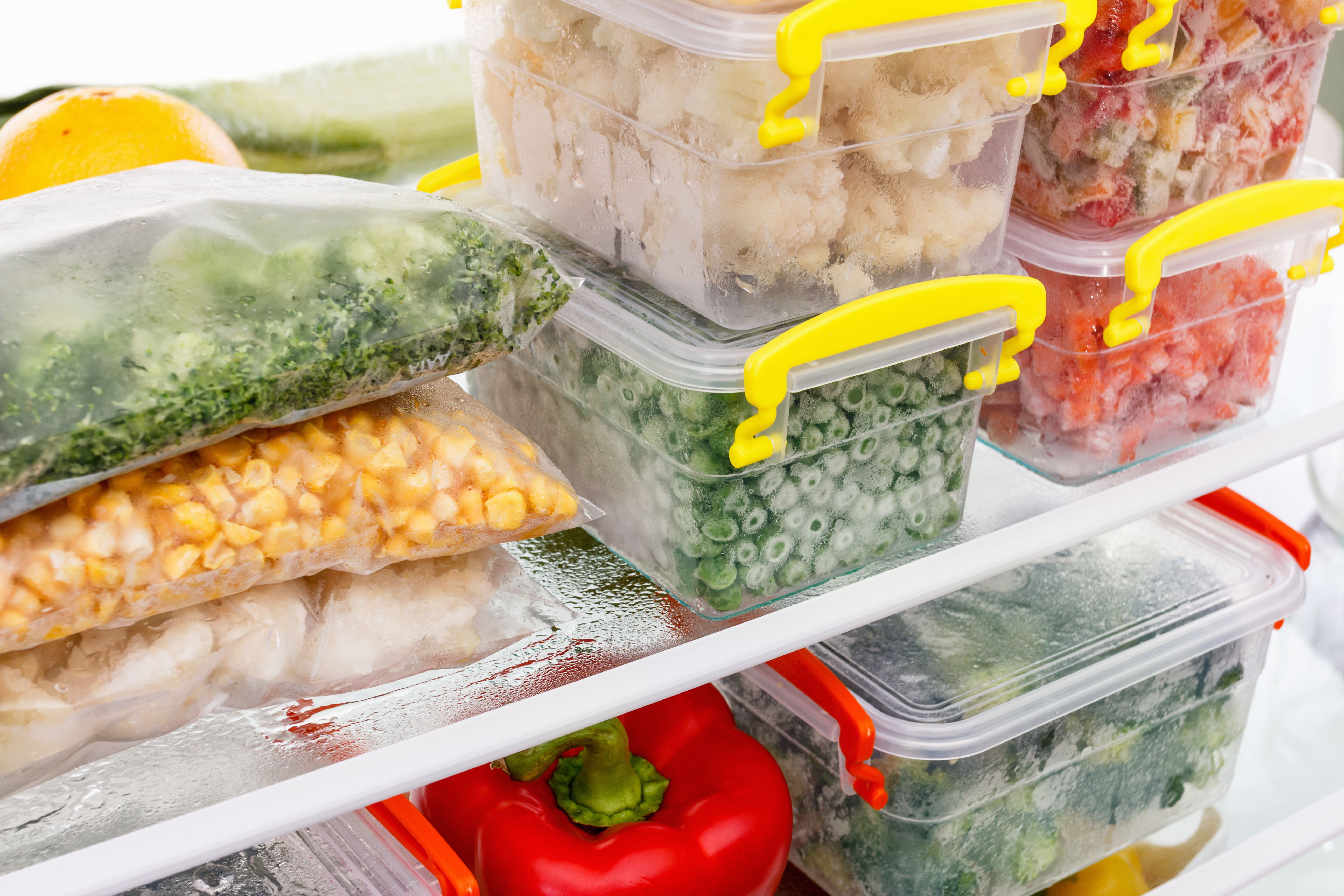
How Long Does Celery Juice Last in the Freezer?
| Max conservation time in freezer |
|---|
| Up to 6 months |
Frozen celery juice has a high shelf-life. You can typically keep celery juice in the freezer anywhere from 3 months to 6 months. Therefore, it’s very convenient to freeze celery juice when you make a large quantity in one go.
When you freeze fresh celery juice, any germs and bacteria it may contain are essentially put into hibernation. That allows you to keep the juice fresh for an extended time.
However, any living micro-organism present in the juice will become active again as it begins to thaw. Thus, it is essential that you freeze the juice as soon as possible after making it and that you drink it shortly after it has thawed.
Freezing also affects the cells of the celery present in the juice. As the water expands during the freezing process, it damages the integrity of the celery cells, impacting the taste of the juice and its texture. But rest assured that most of the nutrients and nutritional value remain intact[1].
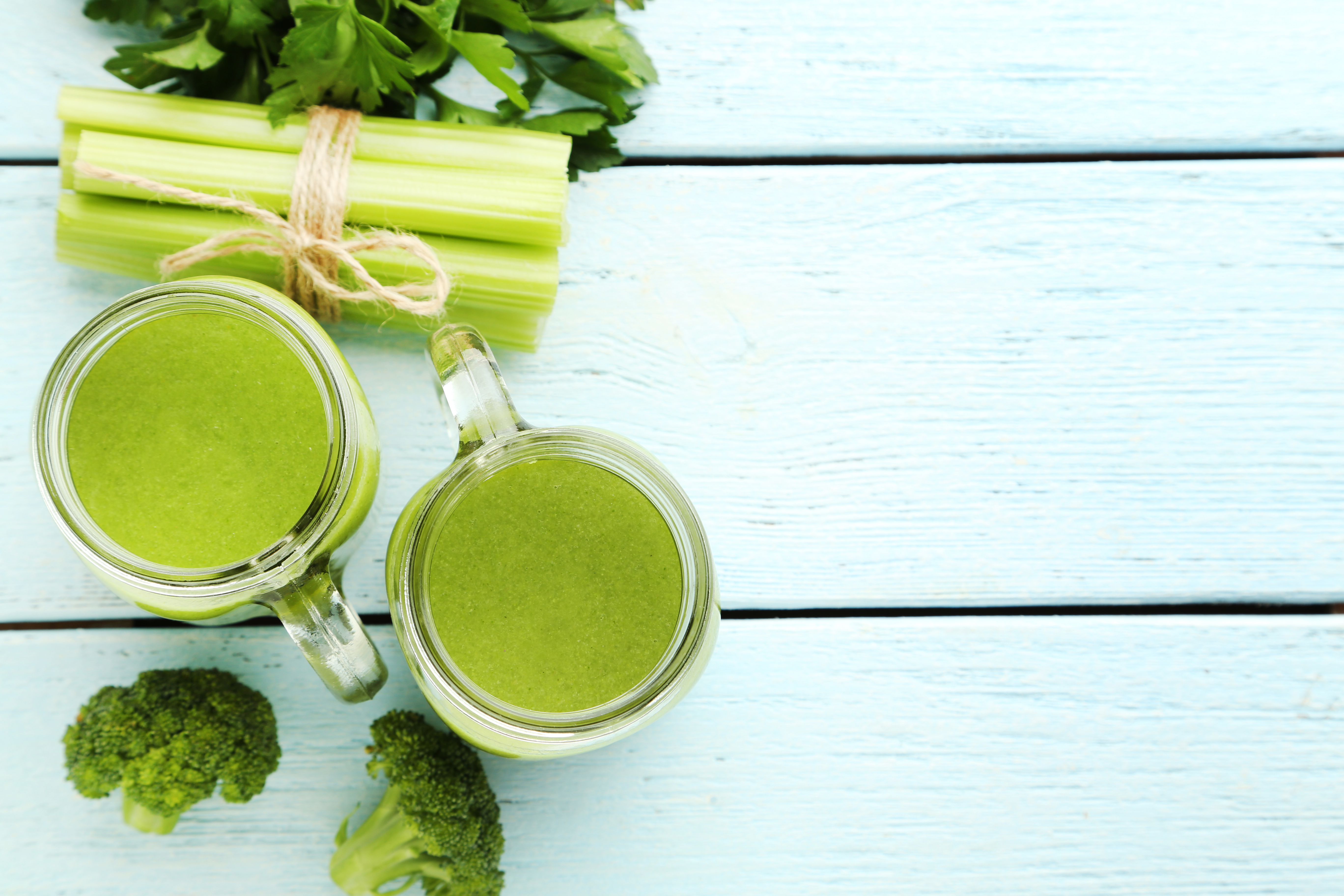
How Long Does Celery Juice Last in a Mason Jar?
| Conservation Method | Max conservation time in mason jar |
|---|
| Room temperature | Up to one day |
| Refrigerator | Up to 72 hours |
| Freezer | Up to 6 months |
Glass mason jars are great for improving the shelf life of all kinds of foods, and this is especially true for fresh juices. That’s because their rubber seal makes them airtight, preventing any new bacteria from entering the jar. It also limits the exposure to oxygen, thus helping limit juice oxidation.
You can safely keep celery juice in a sealed container at room temperature for many hours. But, of course, the juice may not last as long on a very hot day, so exercise caution.
Mason jars are also perfect for making celery juice last in the fridge. Make sure to help prevent oxidation by filling up the jar of celery juice as much as possible to minimize the amount of air present.
You can also safely put the jars in the freezer to freeze celery juice for up to 6 months. When doing so, leave a gap of air in the jar. It will account for the expansion of the liquid as it freezes. Otherwise, you may end up with broken glass and a mess in your freezer.
Because they come in various sizes and are easy to clean in the dishwasher, mason jars are our favorite container to store fresh juice and improve shelf-life, no matter the conservation method you choose.
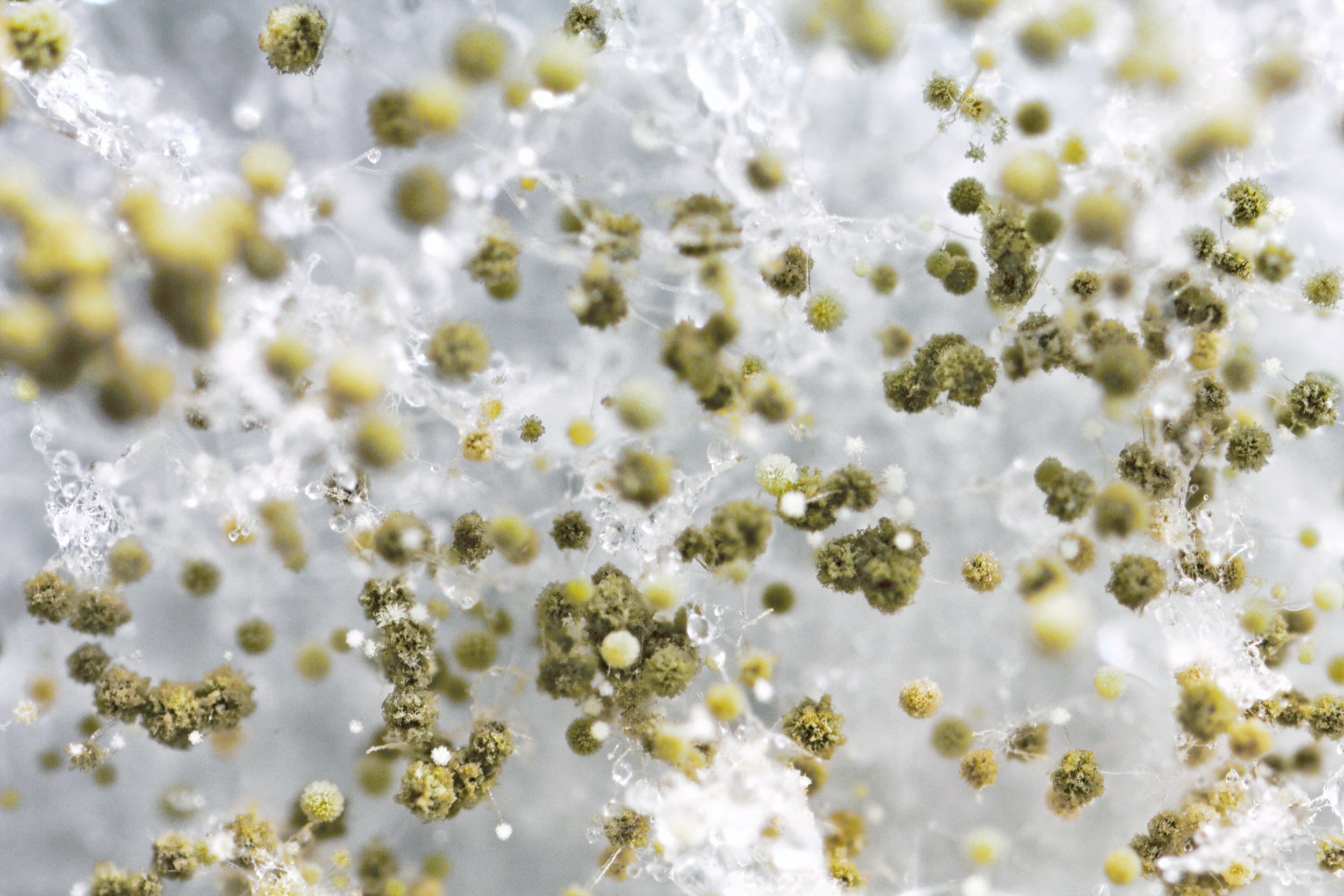
Signs That Indicate Celery Juice Went Bad
Drinking spoiled celery juice can lead to food poisoning. You mustn’t consume celery juice that has extended its shelf life.
Even though you can learn to recognize the signs of spoiled celery juice, some harmful bacteria may develop in an unhealthy juice that has been too long at room temperature or in the refrigerator without giving any signs of their presence.
But generally, you can recognize celery juice that went bad by the following characteristics:
Discolored or brownish color
While fresh celery juice is bright, healthy green, spoiled celery juice can turn brownish or discolored. That can be due to the oxidation of the liquid when it comes in contact with air. After a while, the juice becomes oxidized and can take a darker color.
Off smell
Celery juice should smell fresh. If you notice an off-smell or a sour note (like that of a sour beer), there could be a bacterial colony happily building its new home in your once fresh celery juice. It’s best to evict them as soon as possible unless you are in the mood for an upset stomach.
Presence of bubbles
The presence of bubbles in your celery juice can indicate living micro-organisms in unsafe quantities. It would be best to throw the juice away if the bubbles started appearing after letting it sit for a while.
Growth of mold
A sure-fire way to tell that food has gone bad is mold growth. Don’t bother giving it a taste if you see mold anywhere in your celery juice. Instead, throw it away immediately and wash the container thoroughly to avoid future contamination. Some dishwashers offer a “sanitize” cycle perfect for this application.
Strange taste
If your celery juice tastes off or has a sour note, it’s a clear indicator that you should not consume it. So don’t take any chances and throw it away.
If you have any doubts about whether your juice is still good, you should probably avoid drinking it, even if it still tastes good.
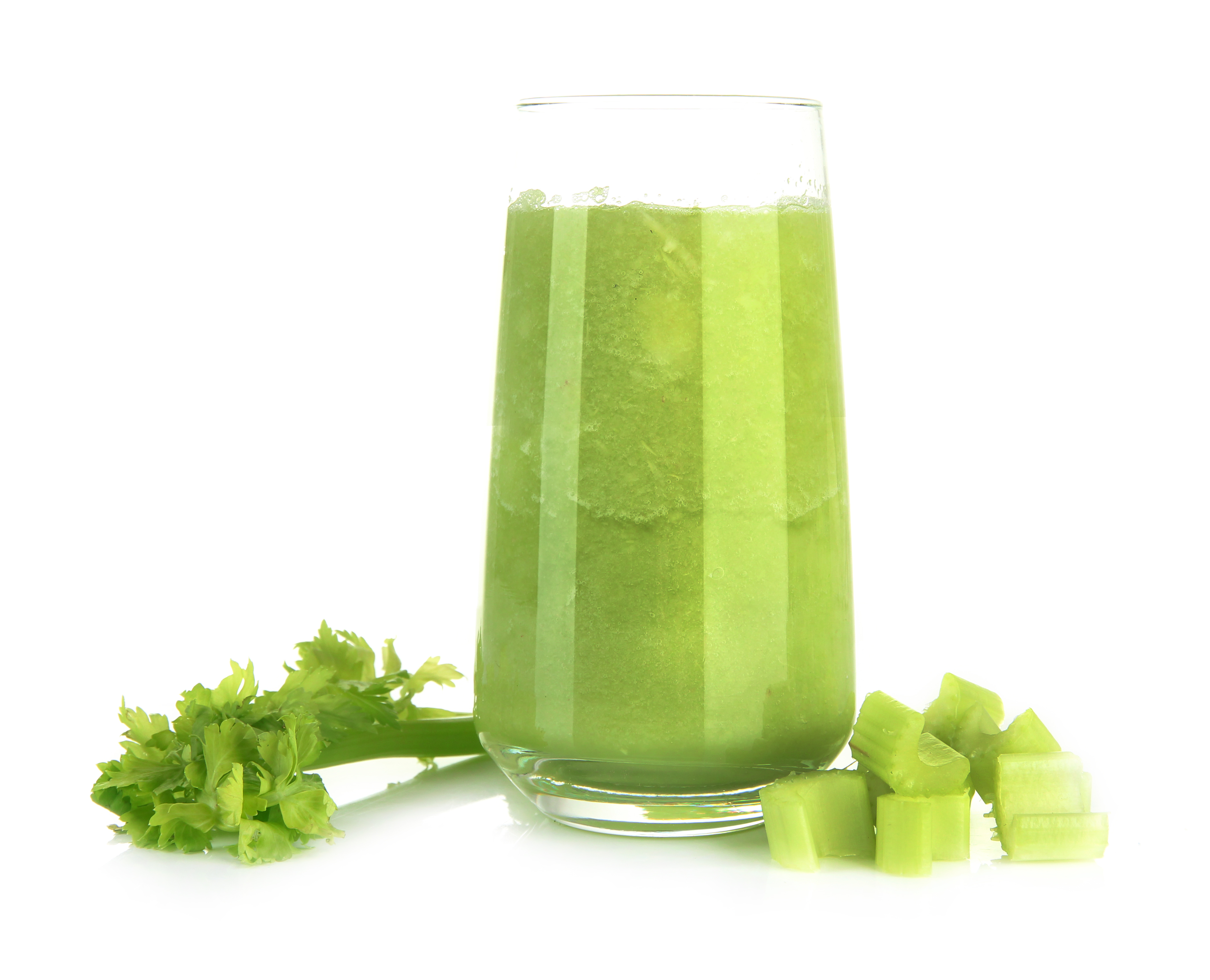
Why Does Celery Juice Go Bad
Like all foods, celery juice can spoil when not appropriately stored. There are two main reasons why celery juice turns bad: oxidation and the growth of pathogens. Let’s look at oxidation first and see how we can help reduce it.
Oxidation
It’s the process by which the celery juice deteriorates when it is in contact with air. It can affect the flavor of the juice, along with its color and nutritional value.
The classic example of oxidation is an apple turning brown a short time after you cut it in half.
The celery is cut, shredded, and pressed to extract the fresh juice. Unfortunately, this process affects the integrity of the celery cells. Exposure to the oxygen in the air causes an oxidation reaction with some enzymes, leading to browning and a loss of nutrients[2].
That’s why it’s essential to reduce oxidation as much as possible during juicing. Here’s how you can achieve this:
Use Fresh Celery Stalks
The fresher your ingredients, the longer your homemade juice should stay fresh. Using fresh celery that hasn’t yet started oxidizing gives you the best chance to preserve your juice longer.
Use a High-Quality Masticating Juicer, and Avoid Centrifugal Juicers
Centrifugal juicers spin at a very high speed. They shred the celery very quickly and use the centrifugal force of the spinning action to extract the juice.
While very quick and practical, the process is not gentle on the celery cells. It tends to break more cells open, leading to more enzyme exposure to air. And that typically gives a juice that will oxidize faster, which you can preserve for a shorter time.
Masticating juicers, on the other hand, operate more slowly. They grind the juice with their auger at a slow speed and cause less damage to the cell wall of the celery stalks, helping prevent oxidation. They also introduce less heat to the freshly squeezed juice to preserve the nutrients. These two factors help improve the juice’s shelf life.
If you want to make high-quality celery juice, invest in one of the best Omega juicers, one of the brands we can recommend.
Fill the Container Completely
To reduce oxidation, you need to limit air contact with the juice. Fill a bottle with the fresh celery juice, making sure to fill it up as much as possible. That will get much of the air out of the bottle and help prevent oxidation.
But if you are freezing celery juice, remember to leave some air at the top of the container to allow the liquid to expand.
Growth of Pathogens
Unlike store-bought celery juice, homemade juice is not pasteurized and doesn’t contain preservative agents. And that means it has more bacteria and other potential pathogens.
That’s why you must refrigerate celery juice if you intend on keeping it for more than a day. Refrigeration slows down the growth of any pathogens present in the juice, and it will last in the fridge for up to 72 hours.
Using a sealed container like a mason jar can also allow you to preserve the juice longer by limiting the addition of new bacteria. Typically, you can keep celery juice in a sealed container for up to 1 day at room temperature.
Thankfully, you can limit the growth of pathogens and oxidation in your celery juice with a few simple tricks.
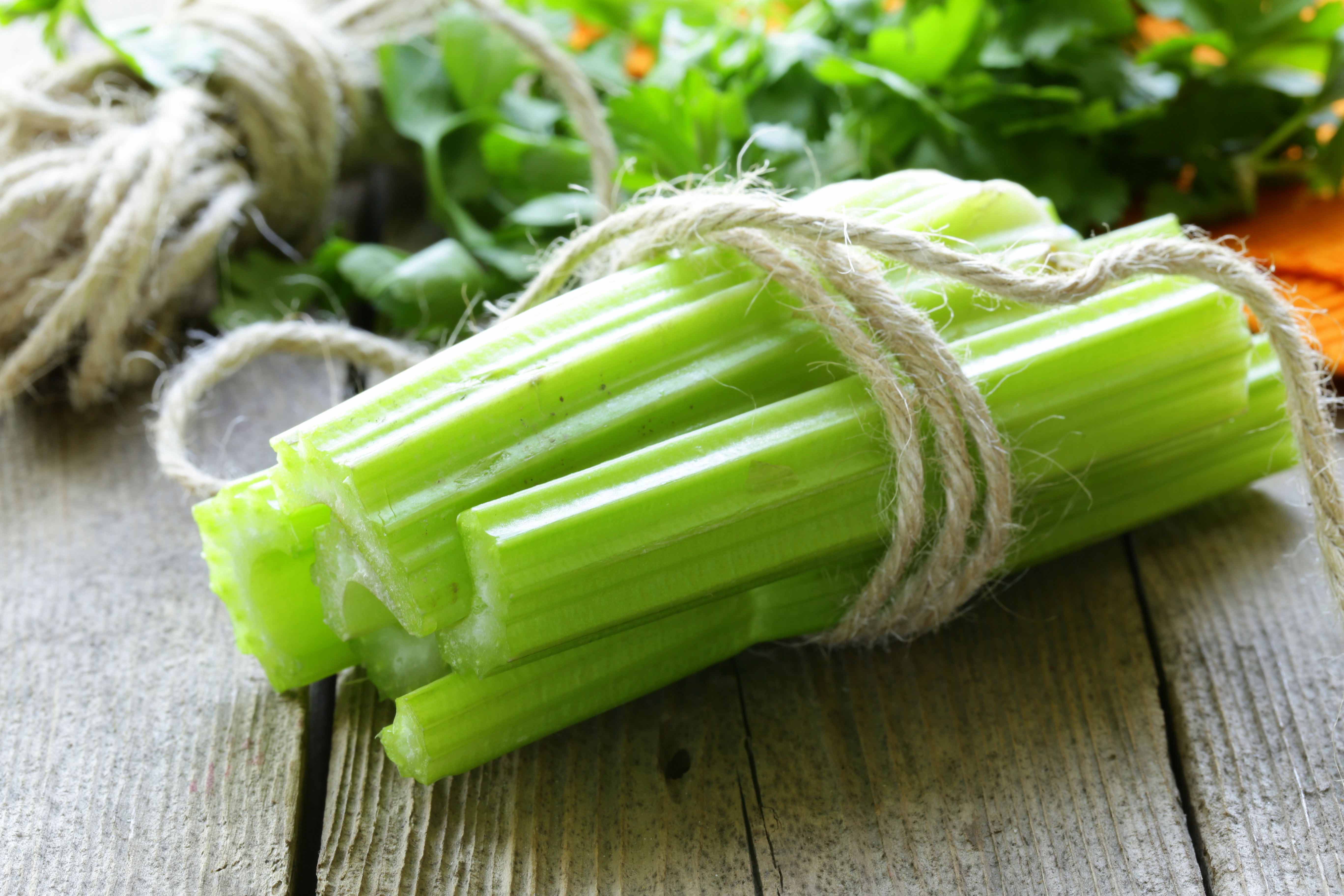
How to Keep Your Celery Juice Fresh Longer
If you want your celery juice to last longer, you can use a few tricks. They are handy if you’re making a batch of celery juice to consume later. Let’s start with the first one:
1. Use the Right Type of Juicer
If you want to keep your celery juice fresh for many days, you need to use the correct type of juicer.
Making celery juice using high-quality masticating slow juicers can delay the oxidation process of the juice and extend its shelf-life by 1 or 2 days. If you are looking for a new masticating juicer, have a look at our best juicers for greens.
On the other hand, the juice extracted by a centrifugal juicer will generally have more oxidation. As a result, it won’t last as long before it loses some taste and its nutritional value is affected.
2. Use Fresh Produce
Using fresh celery can help extend the shelf-time of your homemade celery juice. By using ingredients that haven’t started oxidizing, you should be able to make your celery juice last longer.
3. Use an Airtight Container
After juicing celery, place the liquid in airtight containers like glass mason jars, glass bottles, or even plastic bottles. That will help prevent any new potential pathogens from contaminating your juice.
4. Keep the Container Full
Remember oxidation? To limit your juice from oxidizing and losing nutritional value, you need to limit its contact with air. A good way to achieve this is to fill the container to leave almost all air out.
But if you’re planning to store your fresh celery juice in the freezer, make sure to still leave an air gap at the top of the container to allow the liquid to expand.
Don’t wait too long before you refrigerate your juice after preparing it. Leaving the juice at room temperature for too long can give bacterial growth a head start. And that means your juice won’t last as long, even if you refrigerate it afterward.
Worth Trying: Add Lemon or Lime to Your Recipe
Most pathogens like mold and bacteria prefer to grow in the natural, neutral pH of celery. To make their life harder, you could make your juice more acidic by adding some lemon or lime juice to your recipe.
In theory, this should lower the celery juice’s pH and hinder the growth of bacteria. In practice, however, this couldn’t be demonstrated in a recent study[3].
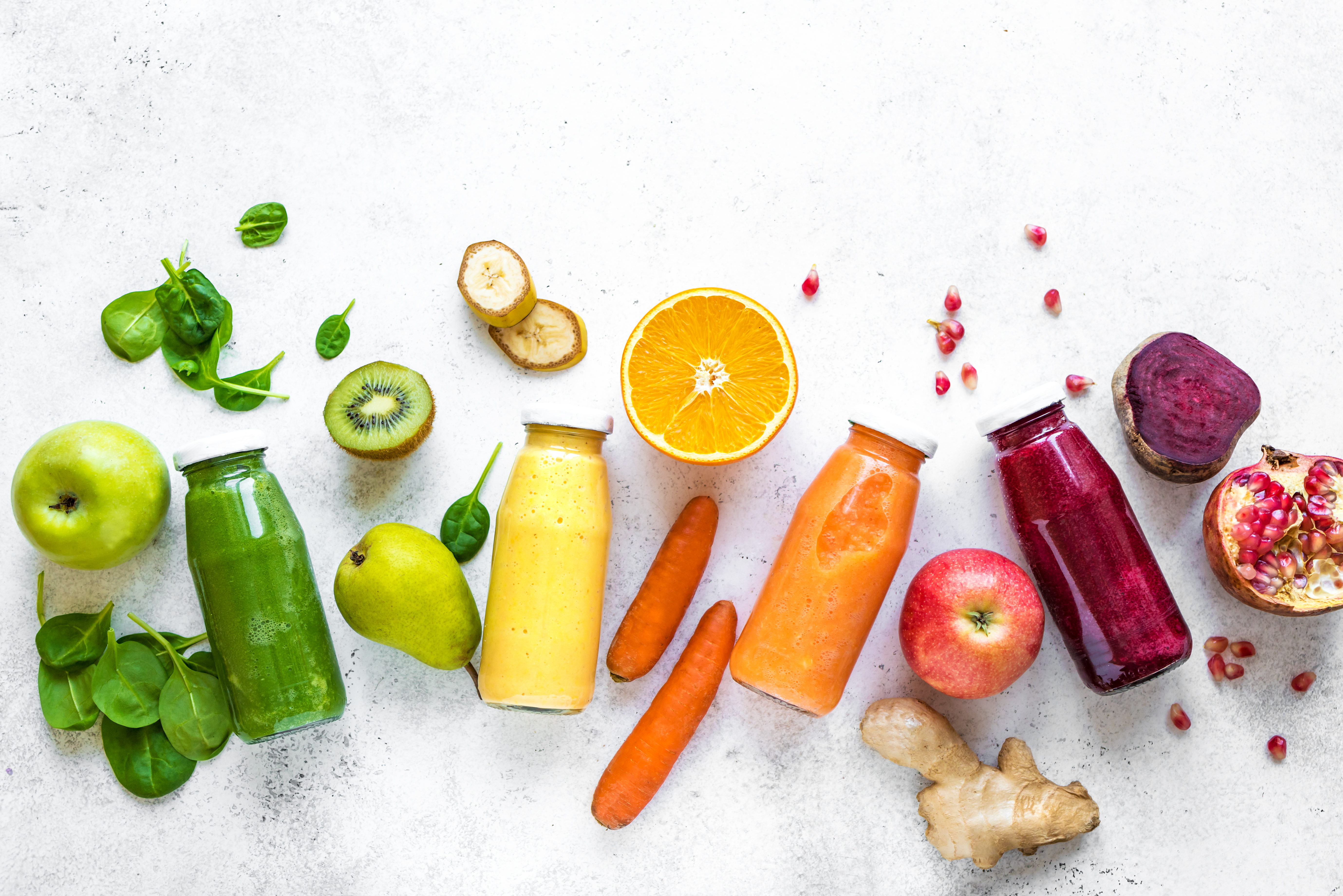
How to Store Celery Juice
So you’ve just made a large quantity of celery juice, and you want to store it optimally to make it last the longest. In the next part, we will look at the best containers to use and how to keep them in the fridge and the freezer to ensure preservation.
The Best Containers for Celery Juice
The first thing to look for is a proper container. The container should be airtight to prevent air from oxidizing the juice and harmful bacteria from building their colony in your fresh celery juice. The three main options are:
Plastic Containers
Plastic containers such as bottles can be a good choice to store freshly pressed juice in, with a few caveats.
While cheap and airtight, plastic bottles can be harder to clean: not all of them can be safely placed in the dishwasher.
In addition, plastic is a synthetic material that can leach toxins into food. So make sure to pick a bottle made of plastic that’s rated safe for food.
But how to know if the plastic bottle is food-safe? That’s simple: look for the code under the bottle. It indicates what kind of plastic it’s made of. The safest choice would be a plastic bottle with the code 1, 2, 4, or 5.
Avoid codes 3, 6, and 7 because they can leach toxins into your juice.
| Plastic Codes And Their Use to Store Celery Juice |
|---|
| Code | Material | Safe for celery juice |
|---|
| 1 | Polyethylene Terephthalate | Yes |
| 2 | High-Density Polyethylene | Yes |
| 3 | Polyvinyl Chloride | No |
| 4 | Low-Density Polyethylene | Yes |
| 5 | Polypropylene | Yes |
| 6 | Polystyrene | No |
| 7 | Polycarbonate / Other | No |
Glass Bottles
Whenever possible, we prefer to use glass containers for celery juice. They are easier to clean, and you can put most of them in the dishwasher’s top rack.
Glass bottles are also much less complicated to use: you don’t need to bother knowing any special plastic codes and whether they’re safe to use with celery juice. There’s no chance for any toxins to leach into your freshly made juice.
However, make sure that the glass bottle you pick is airtight.
Mason Jars
Mason jars are our favorite containers to store homemade juice. They tick all the marks of the perfect juice container for maximum preservation. They’re:
- Made of glass, which is a perfectly safe material for food
- Completely airtight
- Easy to clean
As such, if you are serious about preparing your juice beforehand, you should invest in a good set of mason jars. They come in various sizes that you can easily adapt to your unique need.
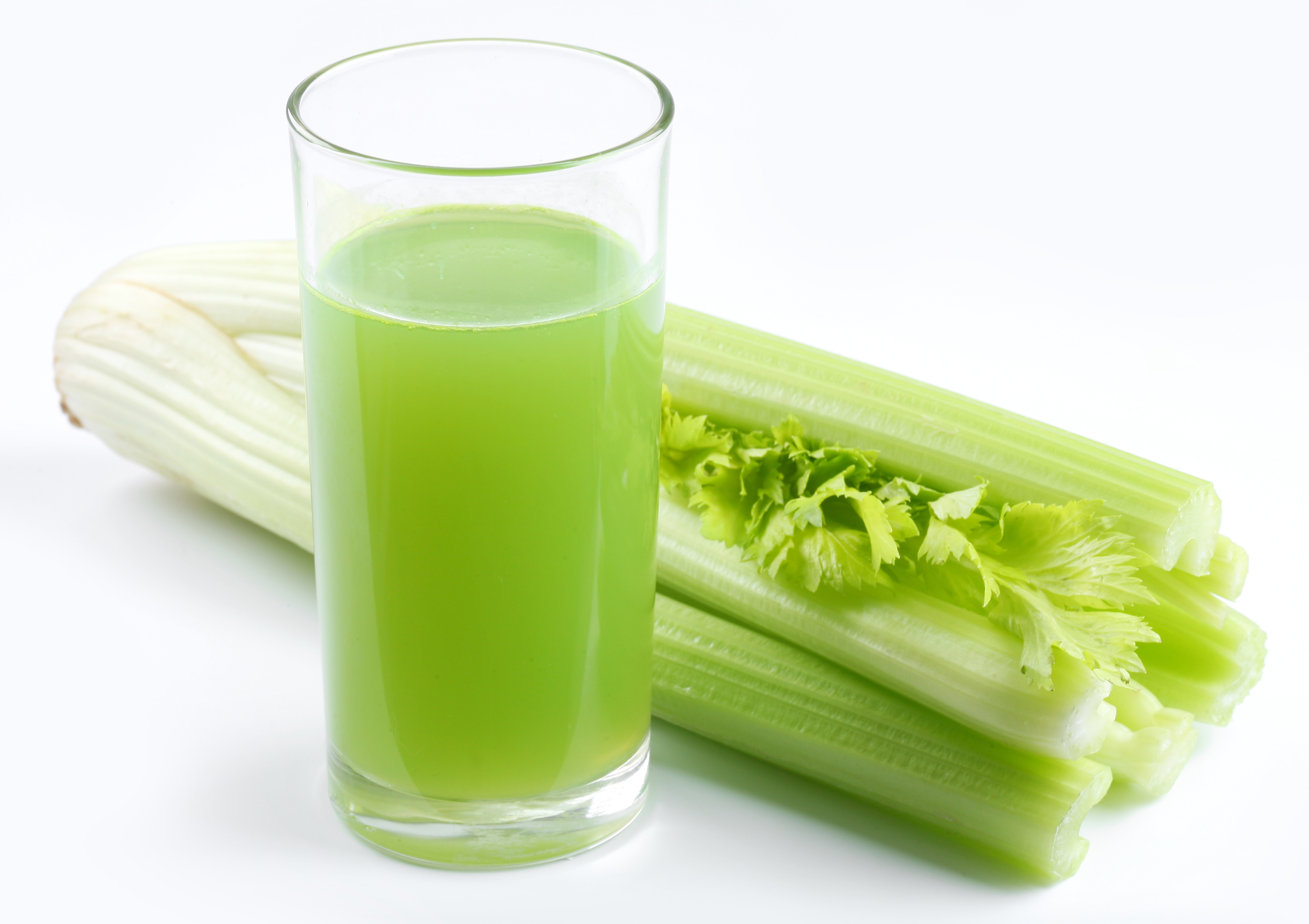
The Best Place to Keep Celery Juice
Once you have your fresh celery juice and your container of choice, it’s time to decide where you want to store your juice. There are two options: the refrigerator for consumption within 72 hours, or the freezer where it can last up to 6 months.
How to Store Celery Juice in the Refrigerator
If you follow the proper procedure, your celery juice should last up to 72 hours in the refrigerator. Here’s how to do it:
- Make sure to use a sealed container. A glass mason jar is our top choice, but a glass bottle or a proper plastic bottle can also do just fine.
- Clean your container thoroughly to prevent any pre-existing bacteria from developing in your freshly made juice.
- Fill the container as much as possible with the fresh celery juice. Doing that will remove a lot of the air from the bottle and lower the amount of oxidation over time.
- Put the container in the refrigerator, where the juice can last up to 72 hours.
Even though the above procedure can help your juice stay fresh for a few days, we recommend you drink celery juice as soon as possible to ensure the best possible taste.
How to Store Celery Juice in the Freezer
The freezer is an excellent way for storing celery juice for up to 6 months.
How to Freeze Celery Juice
The procedure is very similar to storing your juice in the fridge, with one difference:
Instead of filling the container as much as possible, leave an air gap at the top. That will allow the juice to expand fully while freezing, without breaking the bottle.
When freezing celery juice, it’s also essential to use a freezer-safe airtight container to prevent any sort of freezer burn that could alter the taste of the juice once thawed.
How to Thaw Frozen Celery Juice
Thawing frozen celery juice is straightforward: you can do it in the fridge or the sink.
If you want to thaw your juice in the fridge, leave it for about 24 hours in the refrigerator. That will let the juice thaw slowly while still keeping it refrigerated.
But if you want your celery juice faster, you can thaw it in the sink. You can either place the airtight container under running cold water until it’s thawed or leave it submerged in cold water in the sink, changing the water every 30 minutes or so when it becomes too warm.
Make sure to drink thawed celery juice soon after it is ready for consumption. Avoid refreezing it or putting it in the refrigerator to drink the next day as it could be prone to spoil faster.
Bottom Line
Drinking celery juice can be very good for your health. Its natural anti-inflammatory properties and high content of antioxidants and other nutrients can bring you great health benefits.
But you must store fresh celery juice in an airtight container to minimize oxidation and keep new bacteria at bay.
As to how long celery juice lasts, it can stay up to 72 hours in the refrigerator and 6 months in the freezer.
But we will always recommend drinking fresh celery juice as soon as possible to get the best taste and full nutritional value.
FAQ
How long does celery last?
Celery can be stored between two and four weeks in the refrigerator if you wrap it tightly in aluminum foil. That’s because it lets ethylene, a gas that accelerates spoilage and is released by the celery naturally, escape freely.
Does the celery have to be organic?
Your celery does not _have _to be organic to make celery juice. But using organic produce ensures you don’t get any preservation agents or other chemical additives in your fresh glass of juice. On the other hand, like all other organic food, organic celery could not last as long before spoiling because it has no preservatives.
Can celery juice go bad?
Celery juice can go bad when stored for more than 72 hours in the fridge. It can develop molds and bacteria that can be very dangerous to your health. Avoid drinking celery juice if it has a weird color, smells or tastes a bit off, or if bubbles start appearing in your juice. If you have any doubts about the freshness of your juice, it’s best just to throw it away.
Is it bad to consume celery juice after 72 hours?
You should never drink celery juice after 72 hours. Even if it doesn’t give any visible signs of spoilage, the refrigerated juice could have developed harmful bacteria that are invisible, odorless, and tasteless. So it’s best just to throw the juice away after 72 hours to prevent the risk of food poisoning.
How quickly does the nutritional content of celery juice degrade?
Oxidation is responsible for the loss of nutritional content in celery juice. If you use a slow masticating juicer, your juice can last up to 72 hours in the refrigerator. But if you use a faster centrifugal juicer, it creates more oxidation, and the juice may not last as long. Therefore, it’s best to consume it within 24 hours. In any case, we recommend drinking the fresh juice as soon as possible for the maximum nutritional impact.
What is the shelf-life of frozen juice?
Frozen juice, like celery juice, can last up to 6 months in the freezer. Make sure to use an airtight container and leave enough room for the expansion of the liquid as it freezes. You can thaw it by leaving it 24 hours in the refrigerator or the sink in cold water. Drink celery juice immediately after thawing and avoid refreezing or refrigerating it for too long.
References
[1] https://extension.umn.edu/preserving-and-preparing/science-freezing-foods
[2] https://www.ifst.org/lovefoodlovescience/resources/fruit-and-vegetables-enzymic-browning
[3] https://journals.bcit.ca/index.php/ehj/article/view/160

Phil Cooper
Phil is the founder and editor in chief of The Kitchenizer. He writes articles to help busy people spend less time in the kitchen, save money on gadgets, and impress guests with kitchen hacks. He’s also a hopeless computer geek!